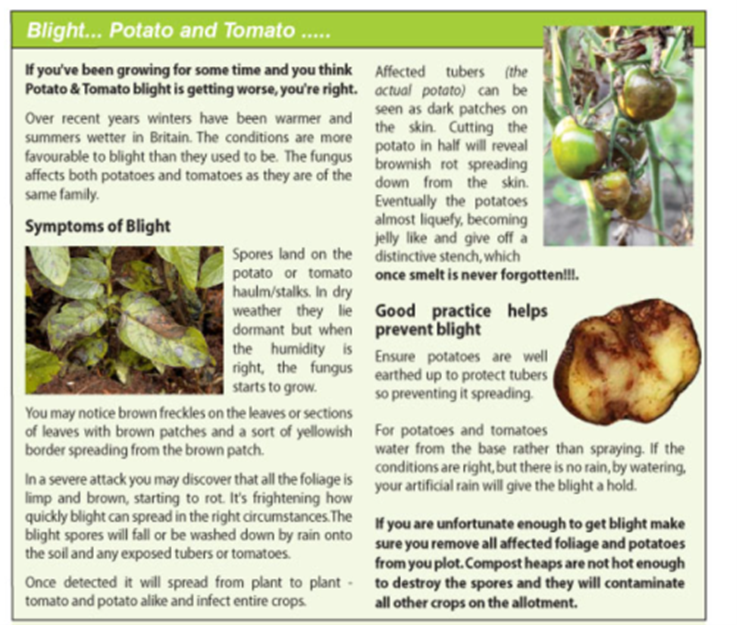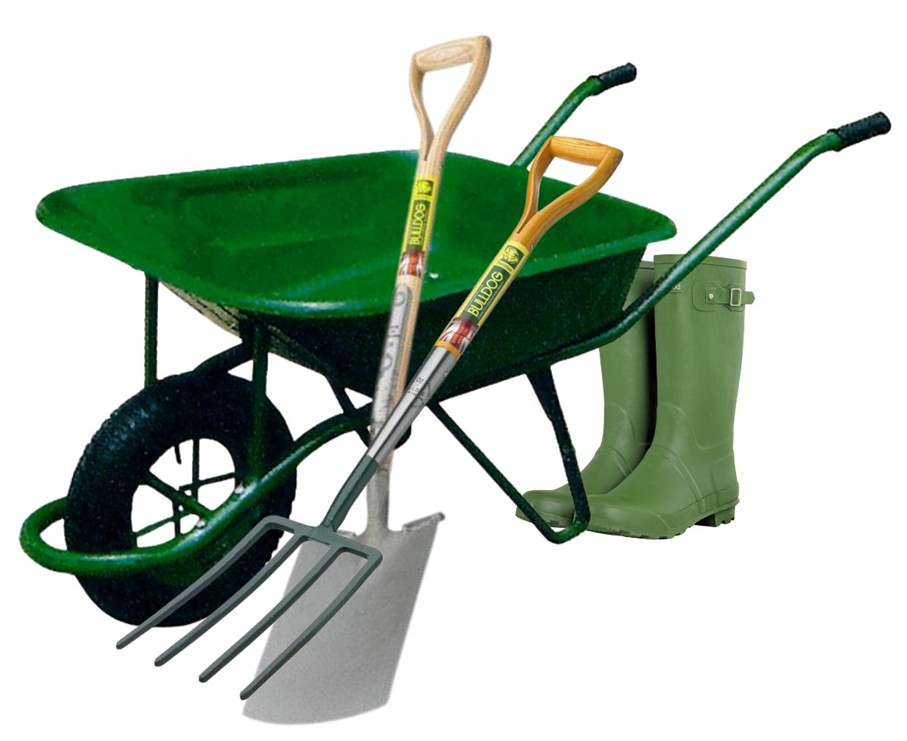Over recent years if you think blight is getting worse you’re right. UK winters are warmer and summers wetter. These conditions are more favourable for blight than they used to be. The fungus affects both potatoes and tomatoes as they are of the same family.
Symptoms of Blight
Spores land on the potato or tomato stalk. In dry weather they lie dormant but when the humidity is right the fungus starts to grow. You may notice brown freckles or brown patches on the leaves and a sort of yellowish border spreading from the brown patch.
In a severe attack you may discover that all the foliage is limp and brown, starting to rot. It’s frightening how quickly blight can spread in the right circumstances. The blight spores will fall or be washed down by rain onto
the soil and any exposed tubers or tomatoes.
Once detected it will spread from plant to plant – tomato and potato alike and infect entire crops.
Affected tubers (the actual potato) can be seen as dark patches on the skin. Cutting the potato in half will reveal brownish rot spreading down from the skin. Eventually the potatoes almost liquefy, becoming jelly like and give off distinctive stench, which when smelt is never forgotten!!
Good practice helps to prevent blight. Ensure potatoes are well earthed up to protect tubers so preventing it spreading.
For potatoes and tomatoes water from the base rather than spraying.
If the conditions are right, but there is no rain, by watering, your artificial rain will give the blight a hold.
If you are unfortunate enough to get blight make sure you remove affected foliage and potatoes from your plot. Compost heaps are NOT hot enough to destroy the spores and they will contaminate all other crops on the allotment.

For more information see: https://www.rhs.org.uk/advice/profile?PID=217
Extract from RHS web site:
The genetic population of the fungus is ever-changing and recent research has shown that new strains seem to have overcome the resistance previously exhibited by some cultivars. In the past some potato cultivars had shown limited resistance, these included ‘Cara’, ‘Kondor’, ‘Orla’, ‘Markies’ and ‘Valor’, but this is not currently effective.
There are, however, cultivars currently thought to show good resistance to the disease, including Athlete, Alouette, Carolus and the Sarpo cultivars (e.g. Sarpo Axona, Sarpo Mira). Some old favourites are very susceptible, eg ‘Arran Pilot’, ‘King Edward’, ‘Majestic’, ‘Sharpe’s Express’. Visit the British Potato Variety Database for more information. The latest situation with regard to the dominant strains of blight can be found on the Euroblight website.
If you want to compare 2 varieties of potatoes to find which has the best blight resistance go to the British Potato Variety Database at the web address below:
https://varieties.ahdb.org.uk/varieties/compare
Comparison of Blight and Scab Resistance of Selected Potato Varieties
(from the British Potato Database mentioned above)
10 – High Resistance 1 – Low Resistance
MAIN CROP VARIETIES
| Cara | Desiree | Piccaso | Sarpo Mira | Valor | |
| Late Blight on Foliage | 7 | 4 | 5 | 7 | 5 |
| Late Bight on tubers | 7 | 5 | 6 | 9 | 7 |
| Common Scab | 7 | 4 | 7 | 4 | 5 |
SECOND EARLY VARITIES
| Charlotte | Kesteral | Nadine | |
| Late Blight on Foliage | 2 | 3 | 4 |
| Late Bight on tubers | 5 | 5 | 4 |
| Common Scab | 4 | 4 | 7 |
Note: Usually Second Earlies are lifted and eaten before blight can take hold
